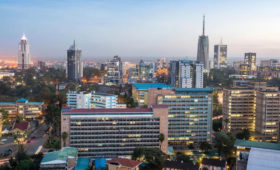

The Great Wildebeest Migration: Nature’s Grand Spectacle
Every year, the Great Wildebeest Migration stands as one of nature’s most astonishing phenomena. Stretching across the vast plains of Tanzania’s Serengeti National Park to Kenya’s Maasai Mara National Reserve, this migration involves over 1.5 million wildebeest, along with hundreds of thousands of zebras and gazelles, traversing a perilous journey in search of greener pastures. Tripcare Adventures invites you to witness this awe-inspiring event firsthand, promising an unforgettable safari experience.
The Great Wildebeest Migration is an annual cycle driven by the wildebeests’ instinctive quest for fresh grazing and water. It’s a journey fraught with danger, where predators lurk and the landscape challenges the endurance of these majestic creatures. This migration is not just a mere movement of animals but a testament to the resilience and survival of the species.
The journey begins in the Southern Serengeti, where the wildebeest give birth to their young. Over 500,000 calves are born within a span of two to three weeks. This period is crucial as the young need to gain strength for the journey ahead. The lush plains provide ample nourishment, and the spectacle of new life amidst the vast landscape is truly mesmerizing. This usually happens in the months of January to March and its normally know as calving season
As the plains dry up around April to June, the herds start moving northwards towards the central and western Serengeti. This phase is marked by long treks and river crossings. The Grumeti River, with its lurking crocodiles, poses a significant threat, yet the wildebeest’s determination is unwavering.
And between the months of July to October, the herds cross the Mara River into Kenya Kenya’s Maasai Mara and probably this is the most dramatic and interesting part of the migration. This perilous crossing is a sight to behold, with the strong currents and predators waiting in ambush. Witnessing this event is a thrilling experience, where nature’s raw power and the wildebeests’ tenacity come into full display.
After grazing on the lush grasses of the Maasai Mara, the herds gradually make their way back to the Serengeti, completing the cycle. The short rains in November rejuvenate the southern plains, welcoming the wildebeest back home. This happens from the months of November to December
Why Witness the Great Migration as any wild lover or any visitor having Kenya and Tanzania on bucket travel list
Spectacular Wildlife Viewing
The migration offers unparalleled wildlife viewing opportunities. Alongside the wildebeest, you’ll encounter zebras, gazelles, and the predators that follow them, including lions, leopards, cheetahs, and hyenas. The sheer diversity and abundance of wildlife make every safari excursion an adventure.
Stunning Landscapes
The journey takes you through some of Africa’s most breathtaking landscapes, from the endless Serengeti plains to the rolling hills of the Maasai Mara. Each location offers unique photographic opportunities, capturing the essence of the African wilderness.
A Lesson in Ecology and Survival
Witnessing the migration provides profound insights into ecological balance and animal behavior. The migration is a vital ecological process that supports numerous species and maintains the health of the ecosystems.
Experience the Migration with Tripcare Adventures
At Tripcare Adventures, we offer expertly guided tours to witness the Great Wildebeest Migration. Our experienced guides ensure you’re in the right place at the right time to witness this extraordinary event. Whether you’re a seasoned safari-goer or a first-time visitor, we tailor our tours to provide an immersive and educational experience.
The Great Wildebeest Migration is more than just a spectacle; it’s a celebration of life, resilience, and the natural world’s wonders. Join Tripcare Adventures for an unforgettable journey, and be a part of one of nature’s grandest shows. Book https://tripcareadventure.com/safaris/ today and witness the marvel of the Great Wildebeest Migration and other safaris in East Africa.




